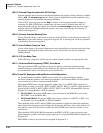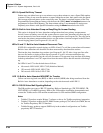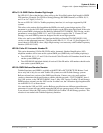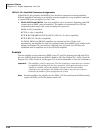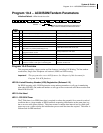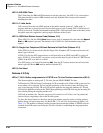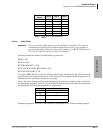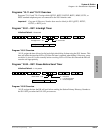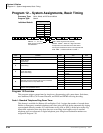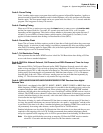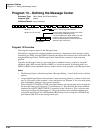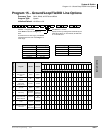
System & Station
Program 10-4 – ACD/ISDN/Tandem Parameters
3-40 Strata DK Programming 5/00
LED 12: BRI ISDN Timer
The T-Wait timer for BRI and PRI terminals works the same way. See LED 11 for a description.
This timer should be used for BRI terminals and only disabled if the local provider instructs
disabling this timer.
LED 13: 3.1kHz Audio
Calls received from the non-ISDN portion of the public network come in 3.1 kHz audio. A
progress indicator is not always provided for these types of calls. Turning LED 13 Off allows all
calls to be received. Toshiba recommends keeping LED 13 Off until some time in the future when
the public network is updated to send a progress indicator with all calls.
LED 14: ISDN Start Button Access Code (Release 4.15)
When LED 14 is On, the ISDN
6WDUW button access code is automatically sent when the 6SHHG
'LDO
(or 6') button is pressed. The default is On. If LED 14 is Off, the number entry timer
expires.
LED 15: Single Line Telephone Off-Hook Retrieval of Held Calls (Release 4.15)
If the [SDN] is on exclusive hold, then the Single Line Telephone (SLT) cannot retrieve the call
when it goes off hook.
If LED 15 is Off, the SLT cannot retrieve a call from hold on an [SDN] on a DKT by going off
hook. If LED 15 is On, the SLT can retrieve a call on hold when if goes off hook if a DKT has an
[SDN] of the SLT on it and it is on hold.
If an SLT places a call on hold by entering
, then the SLT cannot retrieve the call from hold
when it goes Off Hook.
must be entered from the SLT.
LED 16: Not Used
Release 4.3 Only
LEDs 17,18,19: Buffer assignments for LCR/TR over Tie Line Tandem connections (R4.3)
This feature applies to analog and T1 Tie lines, but not ISDN PRI/BRI Tie lines.
Toll Restriction (TR) and Least Cost Routing (LCR) on tandem calls: When a DK system receives
an incoming call on a analog Tie line and the originator, on the far-end system, dials the access
code of an outgoing CO line, TR and LCR will be applied to the outgoing tandem call. TR and
LCR will be applied according to the TR/LCR programming of the DK receiving the incoming Tie
line call and placing the outgoing tandem call.
Call Park on tandem calls: Once the outgoing call is made over a Tie line it can be parked and
retrieved by the originating caller at the far end system.
To allow the above features to function, station port memory must be used as working memory
buffers during call processing time. Use Key/LED 17, 18 and 19 to assign memory buffers (see
Table 3-1). The number of memory buffers assigned must match the number of DTMF receivers
installed in the DK system (receiving the Tie line call) that is establishing the outgoing tandem
connection.



